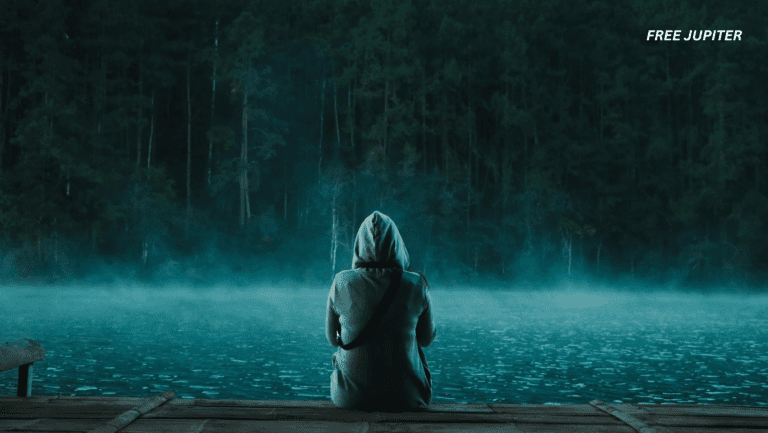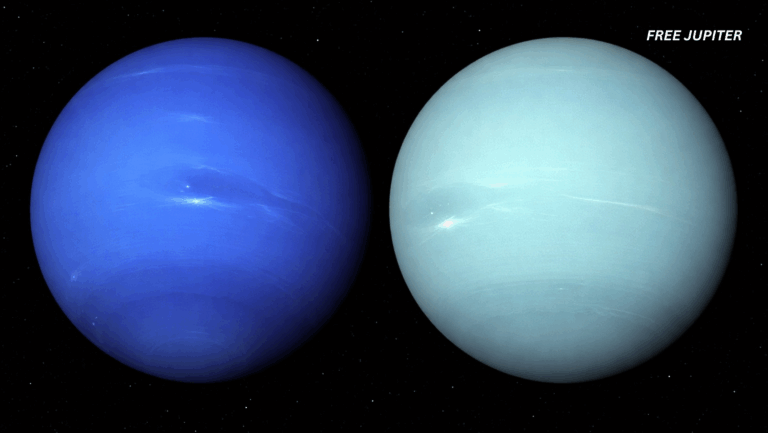Imagine watching the night sky when, suddenly, an enormous flash lights up—a cosmic firework so powerful that it reveals the deepest secrets of the Universe. According to a new study, we may not have to imagine for much longer. Physicists from the University of Massachusetts Amherst say there’s a 90% chance that within the next 10 years, humanity will witness the death of a black hole.
Not just any black hole, but a tiny one believed to have formed billions of years ago, back when the Universe was only a newborn. And if such an event really does unfold, it won’t just be an astronomical spectacle—it could change the way we understand physics itself.
Black Holes Don’t Just Swallow—They Also Die
Black holes are usually described as insatiable monsters that consume everything unlucky enough to get too close. And while that’s true, physicists have long suspected that black holes don’t live forever.
In 1974, Stephen Hawking proposed that black holes should slowly leak energy and particles, a process now known as Hawking radiation. Over time, this radiation causes a black hole to lose mass until—poof!—it evaporates entirely. But here’s the catch: this process is so slow for massive black holes (like the ones at the centers of galaxies) that they’ll last trillions upon trillions of years. Way longer than the current age of the Universe.
So, if we want to see a black hole actually die any time soon, it would have to be a special kind: a primordial black hole (PBH).
Read more: JWST Observations Hint at The First Direct Proof of ‘Primordial Black Holes’
Primordial Black Holes: Relics of the Big Bang
Primordial black holes are thought to have formed in the wild chaos right after the Big Bang. Unlike the giant black holes that form when stars collapse, PBHs would be much smaller, some with masses similar to mountains or asteroids.
Their small size makes them short-lived in cosmic terms. As they radiate away energy, they get hotter and hotter in a runaway process until they finally explode in a burst of light and particles. Think of it like a dying star’s final supernova—except instead of a star, it’s a black hole.
For decades, scientists believed such explosions would be unimaginably rare, maybe happening once every 100,000 years in a region we could observe. But the new study suggests something astonishing: these black hole fireworks may happen once every decade.
Why This Matters: A Particle Treasure Chest
If one of these black holes goes out with a bang, the explosion could release every particle that exists. Not just the ordinary ones we’re familiar with—like electrons, protons, and neutrons—but also the elusive “dark” particles we’ve only theorized about.
Even more thrilling is the possibility of detecting “unknown unknowns”—particles we don’t even know we don’t know. In other words, entirely new building blocks of nature could suddenly make their debut.
As Joaquim Iguaz Juan, one of the study’s astrophysicists, put it:
“We would get a definitive record of every particle that makes up everything in the Universe. It would completely revolutionize physics and help us rewrite the history of the Universe.”
That’s a bold statement, but not an exaggeration. Detecting one of these explosions could confirm Hawking’s theory, prove primordial black holes exist, and open the door to new physics.
A Twist: The Role of “Dark Electrons”
Here’s where things get quirky. To explain why we haven’t already seen thousands of these black holes die, the researchers propose a tweak to current physics.
They suggest that some primordial black holes may carry a tiny electric charge, possibly from interacting with a hypothetical particle they call a “dark electron.” Unlike normal electrons, these wouldn’t interact with light, making them part of the mysterious realm of dark matter.
If PBHs really do hold this dark charge, it could temporarily stabilize them, slowing down their evaporation before the inevitable explosion. This delay means some of them could still be around today, waiting to go boom.
Read more: Dark Matter Could Spawn Black Holes That Consume Planets From the Inside
What Would It Look Like?
So what happens when a black hole dies? It wouldn’t look like a regular star exploding, but scientists expect it would release a burst of gamma rays—the most energetic form of light in the Universe.
Luckily, we already have the right tools to catch such signals. Modern gamma-ray observatories like NASA’s Fermi Gamma-ray Space Telescope are always scanning the skies for flashes of high-energy radiation. According to the new study, these instruments should be sensitive enough to detect the fireworks if one happens nearby (cosmically speaking).
Subtopic: Cosmic Explosions We’ve Already Seen
While we’ve never seen a black hole die, the cosmos isn’t shy about putting on spectacular light shows. Here are a few examples that help us imagine what might be coming:
- Supernovae: When massive stars run out of fuel, they collapse and explode, shining brighter than entire galaxies for weeks. These explosions seed the Universe with heavy elements like gold and iron.
- Gamma-ray bursts (GRBs): Some of the most energetic explosions ever observed, likely caused by merging neutron stars or hypernovae. They can release in seconds more energy than our Sun will produce in its entire 10-billion-year lifetime.
- Kilonovae: When two neutron stars collide, they create bursts of light and gravitational waves. In 2017, astronomers detected one for the first time, marking a historic breakthrough.
If a black hole explosion joins this list, it will add a whole new category to the Universe’s fireworks show.
Subtopic: What If We Don’t See One?
Of course, science is cautious by nature. A 90% chance still leaves a 10% possibility that nothing happens within the next decade. If we don’t see a black hole explosion, it won’t mean the idea is wrong—it could mean the Universe is trickier than we think.
It might suggest that PBHs don’t exist, or that their properties are different from what we’ve modeled. Even a non-detection would still refine our understanding of black holes, dark matter, and the early Universe.
Why This Discovery Would Be Historic
To put it simply, observing a black hole explosion would:
- Confirm primordial black holes exist – ending decades of speculation.
- Prove Hawking radiation is real – validating one of Stephen Hawking’s most famous predictions.
- Reveal new particles – possibly even unlocking the mystery of dark matter.
- Redefine cosmic history – forcing us to rethink how the Universe evolved after the Big Bang.
That’s a lot of breakthroughs packed into one event.
Read more: New Research Shows Black Holes Are Cosmic Tunnels, Not Bottomless Voids
The Waiting Game
For now, astronomers will keep their eyes (and telescopes) on the skies. If the study is correct, sometime in the 2030s we could get the cosmic equivalent of a breaking-news alert: A black hole just exploded.
It might last only seconds, but the data it leaves behind could fuel decades of discoveries. In the grand scheme of things, 10 years isn’t long to wait. After all, the Universe has been around for 13.8 billion years—what’s another decade?
Until then, we’ll be watching, wondering, and perhaps secretly hoping that the cosmos has one more surprise up its sleeve.
Featured image: Freepik.
Friendly Note: FreeJupiter.com shares general information for curious minds. Please fact-check all claims and double-check health info with a qualified professional. 🌱










